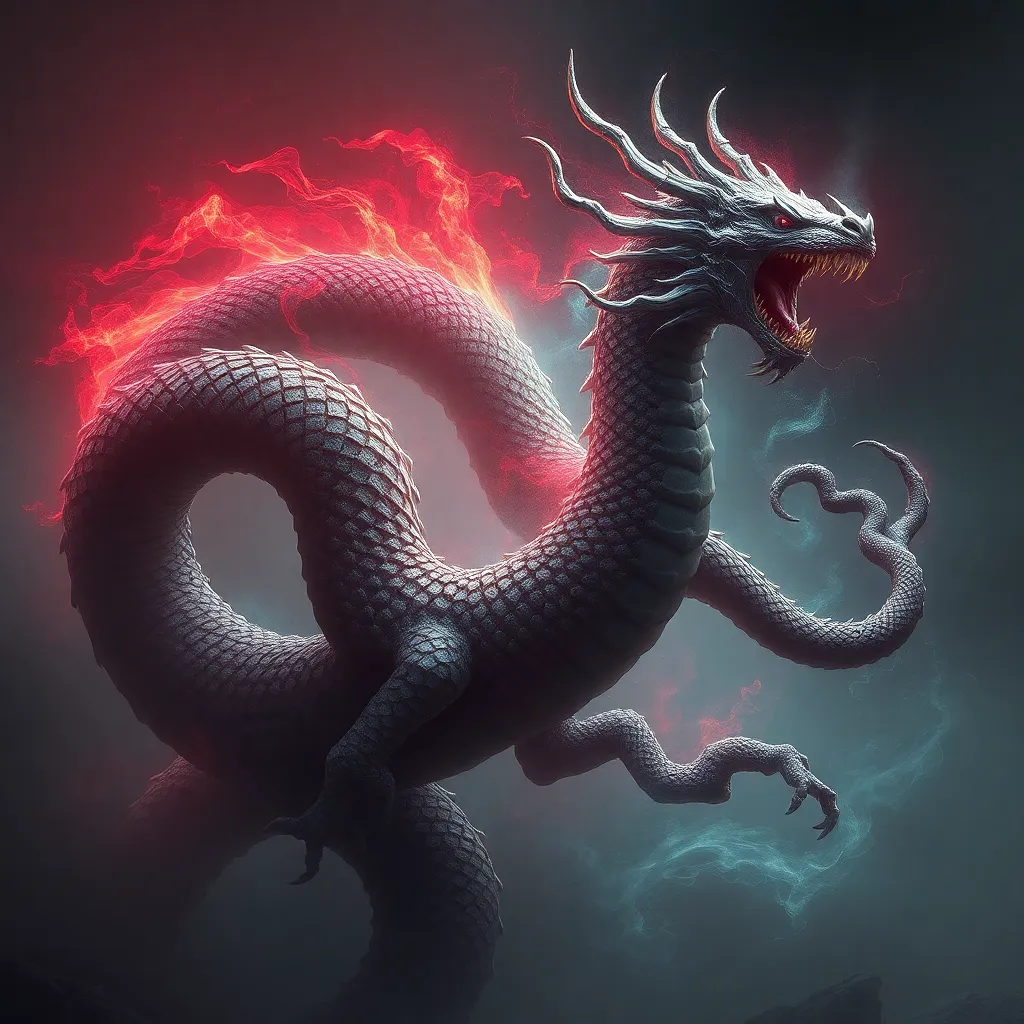The Hydra’s Redemption: Exploring the Monster’s Possible Transformation in Ancient Lore
I. Introduction
The Hydra, a multi-headed serpent-like creature from Greek mythology, has fascinated audiences for centuries. Its terrifying image and lethal abilities have made it one of the most iconic monsters in ancient lore. Traditionally, the Hydra is portrayed as a fearsome adversary, embodying chaos and destruction. However, beneath this monstrous exterior lies a narrative ripe for exploration—one that hints at the potential for redemption and transformation. This article examines the Hydra’s story, suggesting that the creature’s narrative can be reinterpreted to reveal themes of resilience and misunderstood identity.
II. The Hydra in Ancient Greek Mythology
The Hydra’s origins are deeply rooted in ancient Greek mythology. According to legend, the creature resided in the swamp of Lerna and was said to be the offspring of Typhon and Echidna, making it a sibling to other notorious monsters.
One of the key tales featuring the Hydra is found in the myth of Heracles (Hercules) and his Twelve Labors. Tasked with slaying the Hydra as one of his labors, Heracles faced the challenge of a creature that could regenerate two heads for each one that was severed. This daunting battle not only showcased Heracles’ bravery but also highlighted the Hydra’s fearsome nature.
In ancient culture, the Hydra symbolized various aspects, including the dangers of unchecked power and the inevitability of fate. The monster’s ability to regenerate made it a potent symbol of resilience, often interpreted as a metaphor for challenges that seem insurmountable.
III. The Concept of Redemption in Mythology
Redemption, in a mythological context, refers to the transformation of a flawed or monstrous figure into a being capable of change and growth. Throughout various mythologies, numerous examples exist where monsters have undergone significant transformations. For instance:
- The Minotaur, often depicted as a mindless beast, is sometimes portrayed as a tragic figure yearning for acceptance.
- Medusa, once a beautiful maiden, transforms into a monster as a result of divine punishment, yet her story is often reinterpreted to evoke sympathy.
These narratives illustrate how redemption plays a crucial role in humanizing mythological figures. By exploring their vulnerabilities, audiences can relate to these beings on a deeper level.
IV. Reinterpreting the Hydra’s Narrative
Modern interpretations of the Hydra story offer fresh perspectives on the creature. Contemporary adaptations often depict the Hydra as a symbol of resilience and regeneration rather than merely a monstrous adversary. This view emphasizes the creature’s ability to withstand and adapt to challenges, framing it as a representation of strength in adversity.
Additionally, alternative readings of the Hydra’s tale suggest that the creature may be misunderstood. Rather than viewing the Hydra solely as a villain, one could argue that it embodies the struggles of those who face societal rejection or fear. This reinterpretation invites audiences to empathize with the Hydra, recognizing the complexity of its existence.
V. The Hydra and Themes of Fear and Power
The Hydra represents chaos and fear, embodying the dangers that lurk in the unknown. In mythological narratives, the quest for power often involves confronting monstrous entities like the Hydra. Heroes like Heracles are celebrated for their triumphs over such beings, yet these narratives also reflect humanity’s desire to exert control over fearsome forces.
Fear plays a significant role in shaping perceptions of the Hydra and its potential for change. This fear can lead to the demonization of such creatures, overshadowing their capacity for transformation and redemption.
VI. The Hydra in Contemporary Culture
In contemporary culture, the Hydra continues to capture the imagination of artists, writers, and filmmakers. Its appearances in literature, film, and art are diverse, showcasing various facets of the creature’s character. Modern adaptations, such as those in fantasy novels and movies, often explore the Hydra’s complexity, portraying it as a being capable of both destruction and redemption.
For example, in recent adaptations, the Hydra is sometimes depicted as a tragic figure, adding layers to its character that encourage audiences to reconsider the nature of monstrosity. These reinterpretations challenge traditional views and invite discussions about the nature of good and evil in mythological narratives.
VII. The Broader Implications of Monster Redemption
The concept of monster redemption offers valuable insights into societal attitudes towards monsters and villains. By examining figures like the Hydra through the lens of redemption, we gain a deeper understanding of the ‘other’ in mythology—those who are often cast as antagonists without consideration of their backstory or motivations.
This understanding emphasizes the importance of empathy and introspection in our narratives. The lessons drawn from the Hydra’s story encourage modern audiences to look beyond appearances and consider the complexities of identity, struggle, and transformation.
VIII. Conclusion
In summary, the narrative of the Hydra provides a rich tapestry for exploring themes of redemption and transformation within mythology. By reinterpreting the Hydra’s story, we uncover layers of meaning that challenge our perceptions of monstrosity. The potential for transformation in mythological narratives extends beyond the Hydra, encouraging a re-examination of other figures in mythology through a lens of redemption. Ultimately, these explorations remind us of the power of storytelling to foster understanding and empathy in an often chaotic world.



